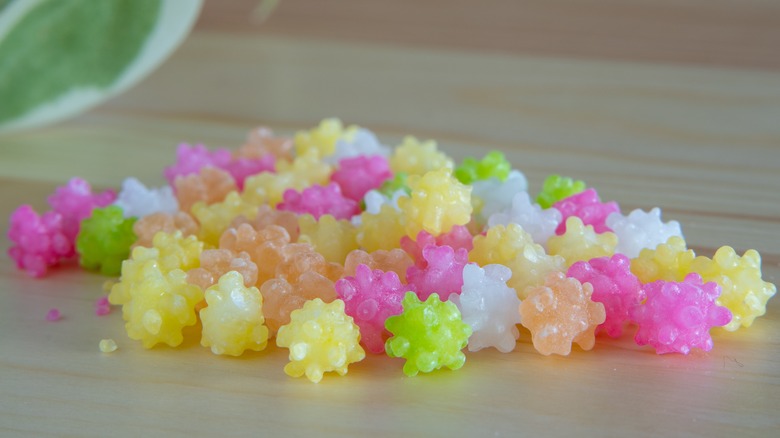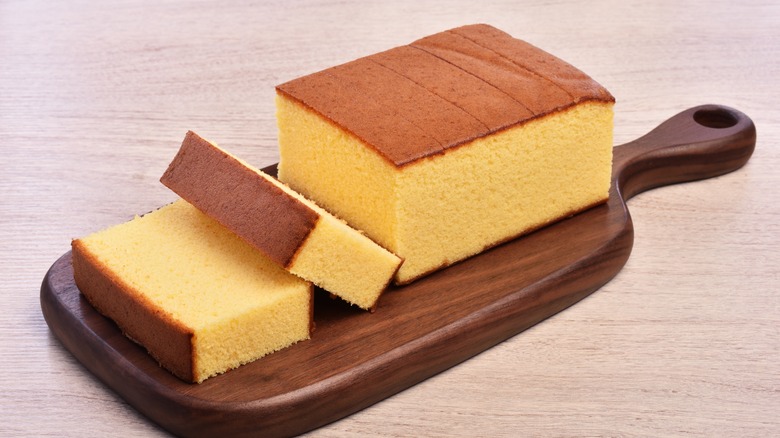How Bad Weather Paved The Way For Some Of Japan's Best Eclectic Sweets
In the 16th century, the Portuguese began trading sugar on the Japanese island of Kyushu. This was not necessarily an intentional move, but the result of a typhoon that veered one of the ships off course. Though the shipwrecked travelers found themselves on Japan's southwestern coast, they turned the nautical upheaval into opportunity and helped establish a trade route that would become known as the Sugar Road.
In 1543 a civil war was occurring in Japan, so the guns the Portuguese had brought along were appreciated. But the guns weren't all the sailors carried. Before the arrival of the Portuguese, Japanese cooks mainly sweetened recipes with ingredients taken from plants. Sugar, when it was used, was reserved for medicinal and healing purposes as the ingredient was pricey.
With the Portuguese sugar supply infiltrating society, the culinary landscape changed. Portuguese traditions brought new flavors to the community, and as trading became a focal point, sugar and the way it was used in recipes did too. Recipes like castella cake (or kasutera) were made with regional flavors and ingredients to give them a local twist, such as the inclusion of mizuame syrup, made from glutinous rice.
Regional adaptations of sweet recipes
Portuguese merchants and missionaries eventually turned the small fishing village of Nagasaki into something of a trading hub. The trading route of the Sugar Road wound through islands and across the land, delivering products and goods to communities. Because sugar increased in price as the distance along the route grew, candies and desserts cropped up in the areas where it was cheapest to buy. For example, colorful candies that look like tiny flowers were called konpeito, borrowing their name from the Portuguese word confeito, a bite-sized candy the Portuguese introduced. The small pieces offered an accessible sample of luxury to those who may not have been able to fully splurge on sugar and sweet treats.
Over time, desserts like castella cake that were once reserved for the wealthy eventually made regular appearances on breakfast tables and alongside afternoon tea. To this day, the fluffy, moist dessert remains a local favorite. Fukusaya, the first confectionary that opened in 1624 to sell the cake, continues to flourish. Sometimes even accidental journeys have sweet outcomes.

